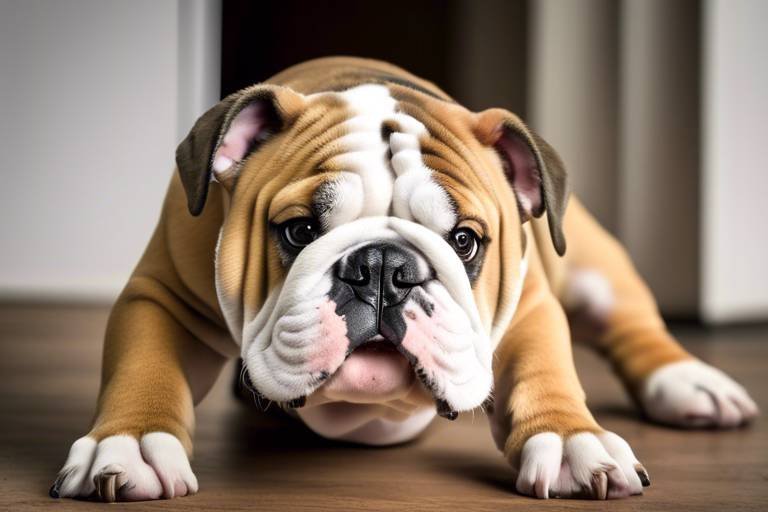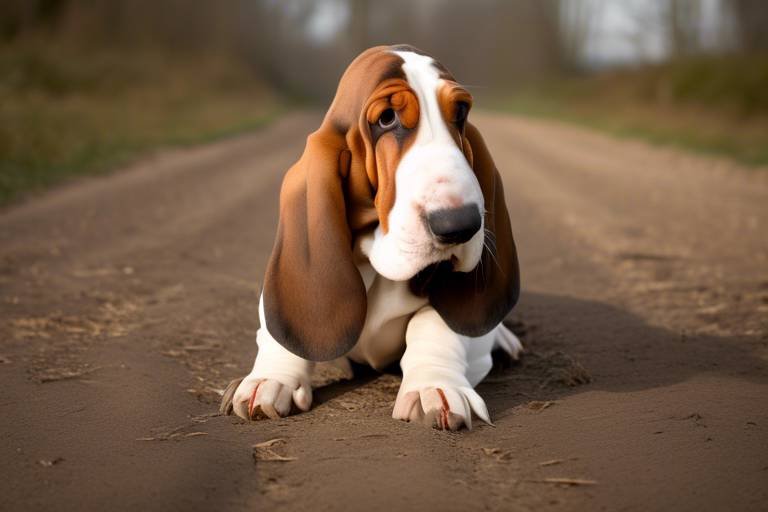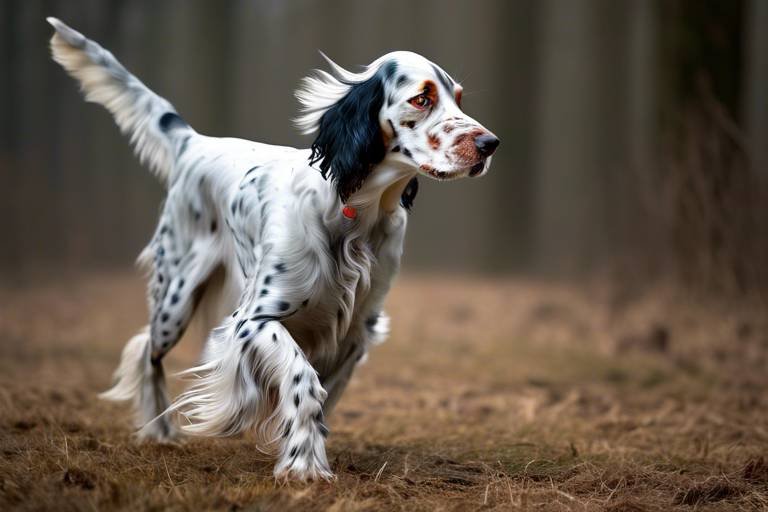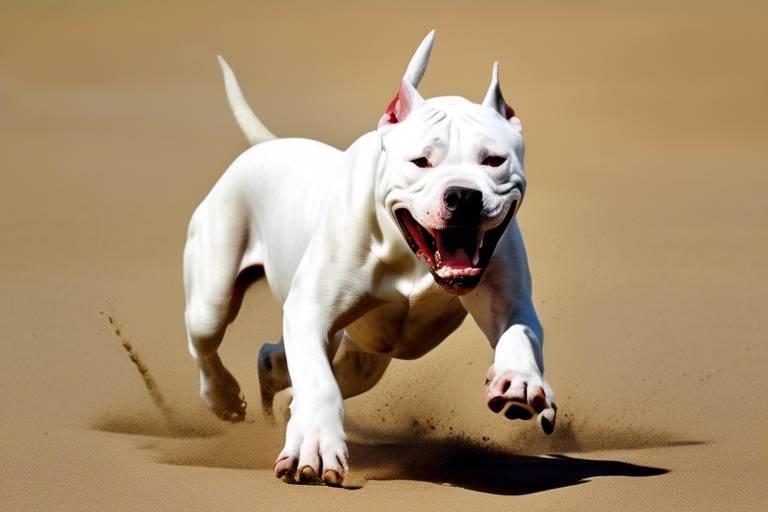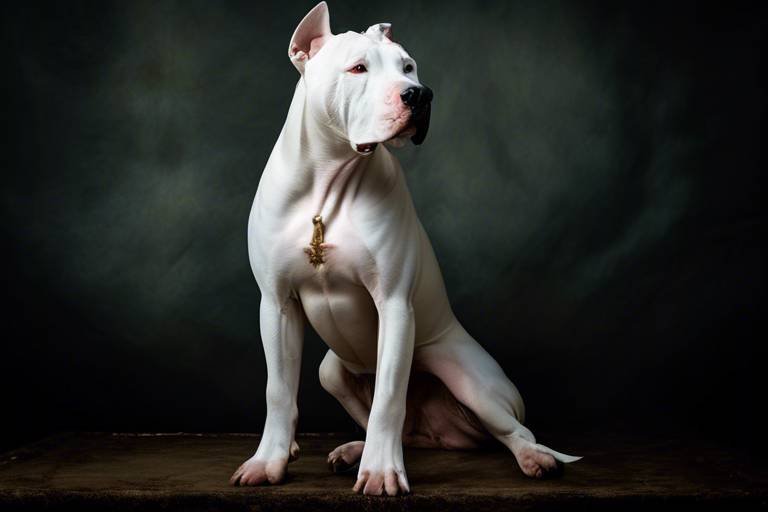The Best Small Dog Breeds for Families
When it comes to finding the perfect furry companion for your family, small dog breeds often steal the spotlight. Their compact size makes them ideal for families living in apartments or homes with limited space. But beyond just size, these breeds bring a wealth of personality, affection, and joy that can enhance family life in ways you might not expect. In this article, we will explore various small dog breeds that are particularly well-suited for families, focusing on their temperament, care requirements, and compatibility with children and other pets.
Imagine coming home after a long day, and there’s a little bundle of joy waiting to greet you with wagging tails and excited barks. Small dogs can be fantastic companions for kids and adults alike, providing endless entertainment and affection. However, not all small breeds are created equal when it comes to family dynamics. Some may be more energetic and playful, while others are calm and cuddly. Understanding these traits is crucial for ensuring a harmonious household.
Throughout this article, we will delve into the temperament and behavior of these breeds, highlighting their unique characteristics and how they fit into family life. We’ll also touch on important health considerations, exercise needs, and training tips to help you make an informed decision about which small dog might be the best fit for your family. So, let’s dive in and discover the small dog breeds that can bring joy, laughter, and companionship to your home!
Understanding the temperament of small dog breeds is crucial for family compatibility. Some breeds are known for their friendly nature and adaptability, making them great companions for children. Others may have higher energy levels and require more stimulation. For example, the Jack Russell Terrier is known for its boundless energy and playful spirit, making it a delightful playmate for kids. On the other hand, a breed like the Bichon Frise is typically gentle and affectionate, perfect for snuggling on the couch after a long day.
When considering a small dog for your family, it’s essential to think about how they will interact with your children and other pets. A dog that is trainable and eager to please will typically adapt better to family life. Additionally, breeds that are known for their patience and gentleness can provide a safe and loving environment for young children who may not yet understand how to interact with animals appropriately.
Health issues can vary significantly among small dog breeds. Some breeds are prone to specific health problems, which can impact their quality of life and your family’s experience. For instance, many small breeds are susceptible to dental issues due to their tiny mouths, making regular dental care essential. Moreover, conditions such as patellar luxation and hip dysplasia can affect their mobility and overall health.
To ensure your family's furry friend stays healthy, it’s crucial to prioritize preventive care. Regular veterinary check-ups, a balanced diet, and appropriate exercise can go a long way in keeping your small dog in tip-top shape. Remember, a healthy dog is a happy dog, and a happy dog makes for a happy family!
Small dogs often have different exercise requirements compared to larger breeds. While they may not need as much space to run, they still require regular physical activity to stay healthy and happy. Generally, small dogs benefit from 30 minutes to 1 hour of exercise each day, depending on their energy levels. This can include walks, playtime in the backyard, or even indoor games that get them moving.
Indoor activities are essential for small dogs, especially in limited spaces. Engaging games like fetch, hide-and-seek, or puzzle toys can keep your dog mentally stimulated and physically active. Consider setting up a small obstacle course in your living room or using interactive toys that challenge their problem-solving skills. Remember, a tired dog is a happy dog!
Outdoor adventures are a great way for families to bond with their small dogs. Activities such as hiking, playing fetch in the park, or simply going for a leisurely stroll can be enjoyable for both your family and your furry friend. Just be sure to consider the safety needs of small breeds, as they can be more vulnerable in certain environments.
Training is vital for small dog breeds to ensure good behavior in family settings. Start with basic commands like sit, stay, and come, using positive reinforcement techniques such as treats and praise. Consistency is key, and involving the whole family in training sessions can strengthen the bond between your dog and your loved ones.
Some small dog breeds are particularly known for their compatibility with children. Breeds like the Cavalier King Charles Spaniel, Pug, and French Bulldog are gentle, playful, and patient, making them excellent companions for families with kids. These breeds not only tolerate the sometimes chaotic nature of family life but thrive in it!
In this section, we provide detailed profiles of the best small dog breeds for families. Each breed is unique, with specific characteristics and care requirements that make them suitable for homes with children. Understanding these traits will help you choose the best companion for your family.
Deciding between adopting a dog or buying from a breeder can impact family dynamics significantly. Adopting a dog from a shelter not only gives a loving home to an animal in need but also often comes with lower costs. On the other hand, buying from a reputable breeder can provide you with a puppy that has known lineage and health guarantees. We discuss the pros and cons of each option, helping families make informed choices about their new furry member.
1. What are the best small dog breeds for families with children?
Some of the best small dog breeds for families include the Cavalier King Charles Spaniel, Pug, Bichon Frise, and French Bulldog. These breeds are known for their friendly temperament and adaptability.
2. How much exercise do small dogs need?
Small dogs typically require 30 minutes to 1 hour of exercise each day, which can include walks, playtime, and indoor activities.
3. Is it better to adopt a dog or buy from a breeder?
Both options have their pros and cons. Adopting a dog can save a life and often comes at a lower cost, while buying from a breeder can provide a puppy with known lineage and health guarantees.
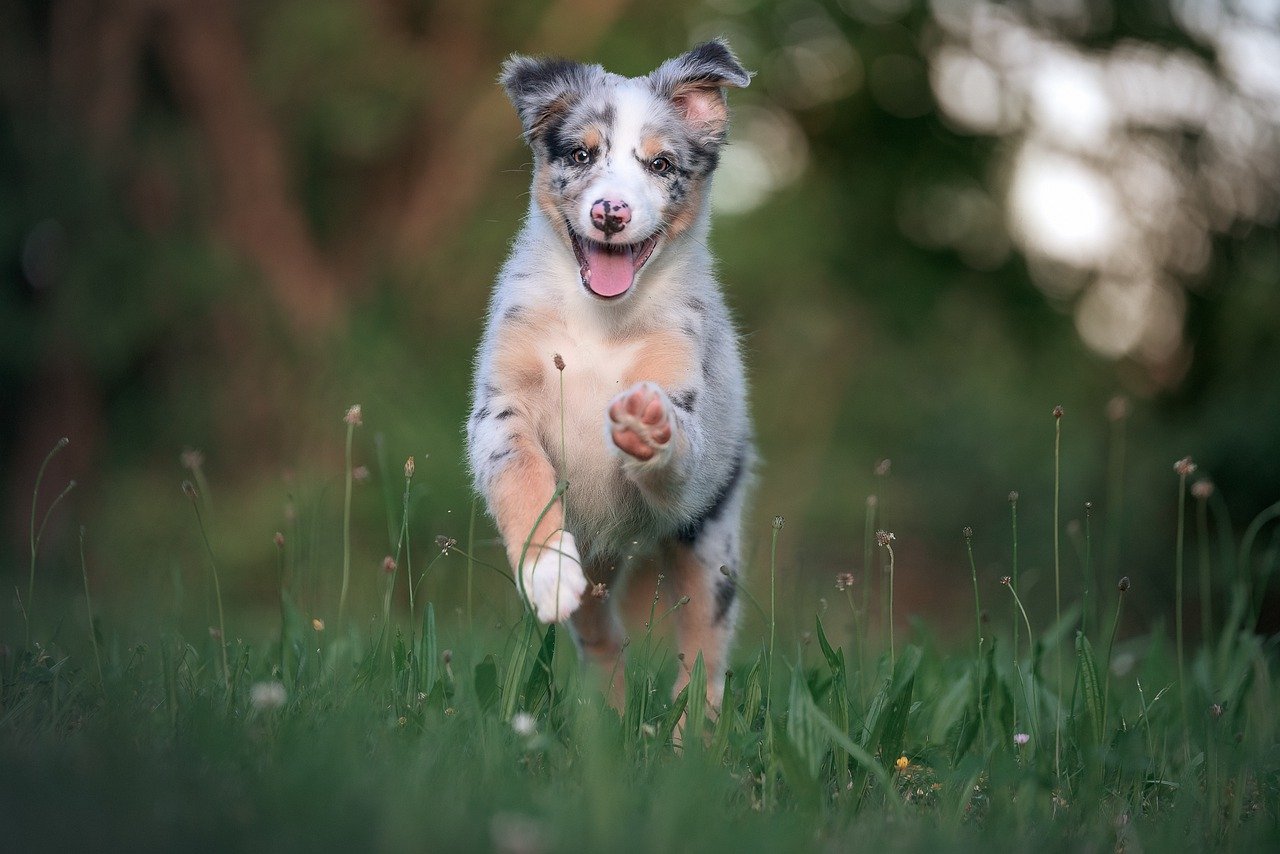
When it comes to choosing a small dog breed for your family, understanding temperament and behavior is absolutely crucial. After all, you want a furry friend who fits seamlessly into your family dynamics, right? Small dogs can vary significantly in their personalities, energy levels, and how they interact with children and other pets. Some breeds are known for their friendly and playful nature, while others might be more reserved or independent. It's essential to consider these traits to ensure a harmonious household.
Many small dog breeds are characterized by their affectionate and social dispositions, making them excellent companions for families. For instance, the Cavalier King Charles Spaniel is often described as a "people dog." They thrive on human interaction and are known for their gentle demeanor, making them perfect for families with young kids. On the other hand, breeds like the Chihuahua can be a bit more territorial and may require a patient approach when introducing them to new family members.
Additionally, energy levels play a significant role in how well a small dog will fit into your family's lifestyle. Some breeds, such as the Pug, are relatively low-energy and enjoy lounging around, while others, like the Jack Russell Terrier, are bundles of energy and need plenty of exercise and stimulation. Understanding these energy requirements can help you choose a breed that matches your family's activity level.
Trainability is another important factor to consider. Small dogs can be quite intelligent, but their stubbornness can sometimes make training a challenge. Breeds like the Beagle are known for their cleverness but can also be a bit willful. This means that consistent training and positive reinforcement are key. Families should be prepared to invest time and effort into training to ensure their small dog learns good manners and behaviors.
In summary, when considering a small dog for your family, pay close attention to their temperament and behavior. Look for traits that align with your family's lifestyle and dynamics. Whether you're looking for a cuddly companion or an energetic playmate, there's a small dog breed out there that can bring joy and love to your home.
- What small dog breeds are best for families with young children? Breeds like the Cavalier King Charles Spaniel, Pug, and Bichon Frise are known for their gentle nature and compatibility with kids.
- Are small dogs more difficult to train than larger breeds? It depends on the breed. Some small dogs can be stubborn, but with patience and consistent training, they can learn just as well as larger breeds.
- How much exercise do small dog breeds need? While requirements vary by breed, most small dogs need at least 30 minutes of exercise daily, which can include walks, playtime, and mental stimulation.
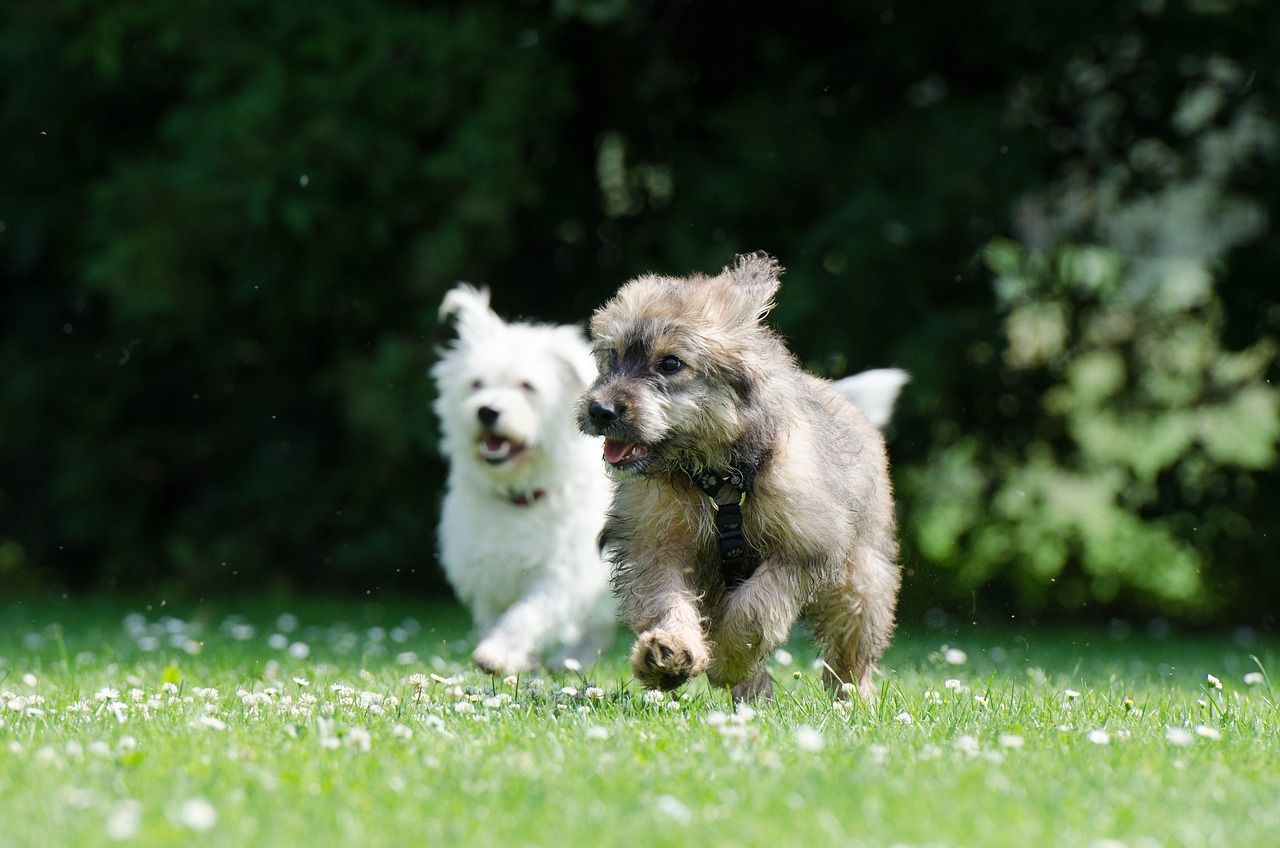
When it comes to welcoming a small dog into your family, understanding their health considerations is paramount. Just like us, dogs can face a variety of health issues, and small breeds are no exception. In fact, many small dog breeds are predisposed to certain health conditions that can affect their quality of life. For instance, breeds like the Chihuahua and Pomeranian often suffer from dental problems due to their small mouths, while others like the Dachshund may experience back issues due to their elongated spine. These concerns highlight the importance of being proactive about your pet's health.
Regular veterinary check-ups should be a cornerstone of your dog's healthcare routine. These visits not only help in early detection of potential health issues but also provide a platform for vaccinations and preventive care. It's essential to establish a relationship with a vet who understands the specific needs of small breeds. During these visits, your vet can offer valuable advice on diet, exercise, and even behavioral concerns.
Preventive care is another critical aspect of maintaining your small dog’s health. This includes:
- Dental Care: Regular brushing and dental chews can help prevent periodontal disease.
- Nutrition: A balanced diet tailored to your dog’s size and age is crucial.
- Weight Management: Keeping your dog at a healthy weight can prevent many obesity-related issues.
Moreover, small dogs can be more sensitive to temperature extremes than larger breeds. This means they might require extra care during hot summers or cold winters. Investing in a cozy sweater for chilly walks or ensuring they have plenty of water during hot days can make a significant difference in their comfort and health.
Lastly, let’s not forget the importance of mental health. Small dogs are often energetic and require mental stimulation to stay happy. Engaging them in activities such as puzzle toys or interactive games not only keeps them physically fit but also mentally sharp. After all, a happy dog is a healthy dog!
Q: What are the common health issues in small dog breeds?
A: Small dog breeds often face issues like dental problems, patellar luxation, and heart diseases. Regular vet visits and preventive care can help manage these risks.
Q: How often should I take my small dog to the vet?
A: It's advisable to take your small dog for a check-up at least once a year, but puppies and older dogs may require more frequent visits.
Q: What kind of food is best for small dog breeds?
A: A high-quality, balanced diet specifically formulated for small breeds is ideal. Consult your vet for recommendations tailored to your dog's age, weight, and health status.
When it comes to small dog breeds, understanding their exercise needs is essential for ensuring they lead happy and healthy lives. While you might think that smaller dogs require less exercise than their larger counterparts, that’s not always the case. In fact, many small breeds are bursting with energy and need regular physical activity to stay fit and to prevent behavioral issues. Just like a child who has too much energy and needs to play outside, small dogs thrive when they have the chance to run, jump, and explore.
Typically, small dogs benefit from about 30 minutes to 1 hour of exercise daily. This can be broken down into multiple play sessions throughout the day. Think of it as a mini workout routine; just as we feel better after a good sweat, dogs also experience physical and mental benefits from regular activity. Engaging in activities such as short walks, playtime in the yard, or even some agility training can keep your furry friend stimulated and satisfied.
However, it’s important to tailor the exercise routine based on the individual dog's breed, age, and health. For example, breeds like the Jack Russell Terrier or the Miniature Schnauzer are known for their high energy levels and may require more vigorous playtime, while breeds like the Pug or the Shih Tzu might be perfectly content with a leisurely stroll around the block. Always remember that exercise should be fun and engaging! Here are a few ideas:
- Daily Walks: A simple yet effective way to keep your dog active.
- Fetch Games: Perfect for burning off energy while strengthening your bond.
- Obstacle Courses: Set up a mini agility course in your backyard for some fun challenges.
- Dog Parks: A great place for socialization and exercise with other dogs.
Moreover, keeping an eye on the weather is crucial. Small dogs can be sensitive to extreme temperatures, so during hot summer days or chilly winter months, it’s wise to adjust exercise routines accordingly. Early morning or late evening walks can help beat the heat, while indoor play can be a lifesaver during inclement weather.
In summary, meeting the exercise needs of small dog breeds is not just a matter of routine; it’s about understanding their unique personalities and energy levels. By providing a balanced mix of physical activity and mental stimulation, you can ensure your small dog remains a happy, healthy, and well-behaved member of your family.
Q: How much exercise does a small dog really need?
A: Generally, small dogs need about 30 minutes to 1 hour of exercise daily, but this can vary based on the breed and individual energy levels.
Q: Can I exercise my small dog indoors?
A: Absolutely! Indoor activities like fetch, hide and seek, or agility training can be great alternatives when outdoor exercise isn’t possible.
Q: What are the best types of exercise for small dogs?
A: Daily walks, playtime in the yard, fetch games, and visits to dog parks are all excellent forms of exercise for small breeds.
Q: How do I know if my small dog is getting enough exercise?
A: Signs of a well-exercised dog include a calm demeanor at home, a healthy weight, and a willingness to engage in play. If your dog seems restless or destructive, they may need more activity.
Keeping your small dog entertained indoors can be a delightful challenge, especially when the weather outside isn't cooperating. Small dogs, despite their size, have a lot of energy and need regular stimulation to stay happy and healthy. Think of indoor activities as a mini-adventure for your furry friend, helping to prevent boredom and destructive behaviors that can arise from pent-up energy.
One fantastic way to engage your small dog is through interactive games. These can range from simple fetch using soft toys to more complex puzzle toys that challenge their minds. For instance, you can hide treats in a puzzle feeder, encouraging your dog to work for their reward. This not only keeps them occupied but also sharpens their problem-solving skills. Remember, a tired dog is a happy dog!
Another great indoor activity is agility training. You don’t need a fancy setup; you can use household items like chairs, broomsticks, and cushions to create an obstacle course. This can be a fun way to bond with your dog while providing them with physical and mental exercise. Imagine your living room transforming into a mini agility course! Just a few minutes of running, jumping, and weaving can tire them out and make them feel accomplished.
Additionally, consider incorporating some basic training sessions into your indoor routine. Teaching your dog new tricks or reinforcing basic commands can be both fun and beneficial. Use positive reinforcement techniques, such as treats or praise, to encourage good behavior. Not only does this strengthen your bond, but it also ensures your dog is well-behaved and responsive, which is crucial in a family environment.
For those quieter moments, snuggling up with your dog for some quiet time can be just as rewarding. Dogs thrive on companionship, and simply being close to you can provide them with comfort and security. You can read a book, watch a movie, or even have a cozy nap together. This kind of interaction is important for their emotional well-being.
Finally, if you have the space, consider setting up a designated play area filled with toys that cater to your dog’s preferences. Rotate the toys regularly to keep things fresh and exciting! You might be surprised at how much joy a simple squeaky toy can bring. Just like children, dogs can get bored with the same old toys, so keep their playtime dynamic and engaging.
In summary, indoor activities for small dogs are all about creativity and engagement. Whether it's through play, training, or simply spending quality time together, the key is to keep your furry friend active and entertained. By incorporating these fun activities into your routine, you'll not only enhance your dog's quality of life but also create lasting memories as a family.
Q: How much indoor exercise does my small dog need?
A: Small dogs typically require at least 30 minutes of exercise daily, which can be broken into shorter sessions throughout the day. Indoor activities can supplement this exercise effectively.
Q: What types of toys are best for small dogs?
A: Look for toys that are appropriately sized for your dog. Soft toys, squeaky toys, and interactive puzzle toys are great options that keep them engaged.
Q: Can I train my small dog indoors?
A: Absolutely! Indoor training sessions can be very productive. Just ensure you have a quiet space free from distractions, and use positive reinforcement techniques.
Q: How do I know if my dog is bored?
A: Signs of boredom can include destructive behaviors, excessive barking, or restlessness. If you notice these signs, it might be time to increase their activity level.
When it comes to spending quality time with your small dog, outdoor adventures are not just fun; they're essential for building a strong bond between your family and your furry friend. Imagine the joy of watching your pup chase after a butterfly or sniff every blade of grass in the park. These moments create lasting memories and provide the physical exercise that small dogs need to stay healthy and happy.
One of the best ways to engage your small dog outdoors is through regular walks. Not only do walks help burn off energy, but they also expose your dog to new sights, sounds, and smells. This sensory stimulation is crucial for their mental health. Aim for at least 30 minutes of walking each day, adjusting the duration based on your dog's age and energy level. Think of it as a mini-adventure; every walk is like a new expedition into the great unknown!
Moreover, consider incorporating some fun activities during your outdoor excursions. Here are some engaging ideas:
- Fetch: A classic game that can be played in your backyard or at a local park. Use a soft ball or toy that’s easy for your small dog to carry.
- Agility Courses: Set up a simple obstacle course with cones, tunnels, or jumps. This not only provides exercise but also enhances your dog's agility and coordination.
- Playdates: Organize playdates with other dogs. Socializing with peers is essential for your dog's development and can lead to delightful interactions.
Safety is paramount during outdoor adventures. Always keep an eye on your small dog, especially in unfamiliar environments. Small breeds can be more vulnerable to larger animals or rough terrain. A good rule of thumb is to keep your dog on a leash in public areas to prevent any unexpected mishaps. Additionally, consider using a harness instead of a collar to ensure better control and comfort for your pup.
Don’t forget about the weather! Small dogs can be sensitive to extreme temperatures. On hot days, avoid walking during peak sun hours, and always bring water to keep your dog hydrated. Conversely, during colder months, consider doggy jackets or sweaters to keep them warm. After all, a comfortable dog is a happy dog!
In conclusion, outdoor adventures are a fantastic way to keep your small dog active and engaged. They not only promote physical health but also enhance the emotional connection between your family and your pet. So grab that leash, pack some treats, and head out for your next family adventure!
Q: How much exercise does a small dog need?
A: Most small dogs require around 30 minutes of exercise each day, but this can vary based on the breed and individual energy levels.
Q: Can small dogs participate in outdoor activities like hiking?
A: Yes, small dogs can enjoy hiking, but it's essential to choose trails that are safe and manageable for their size. Always monitor their energy levels.
Q: What should I do if my small dog is scared of new outdoor environments?
A: Introduce new places gradually and use positive reinforcement to encourage exploration. Bring their favorite toys or treats to make the experience more enjoyable.
Training your small dog is not just about teaching them to sit or stay; it’s an essential part of ensuring that your furry friend becomes a well-adjusted member of your family. Small dog breeds often have unique personalities and quirks that can be both delightful and challenging. To set your pup up for success, start with some basic training tips that cater to their specific needs.
First and foremost, consistency is key. Dogs thrive on routine, so make sure that everyone in the family is on the same page when it comes to commands and rules. If one family member allows the dog to jump on the couch while another doesn’t, it can create confusion for your pet. Establish a clear set of rules and stick to them, ensuring that your small dog knows what behaviors are acceptable.
Another vital aspect of training is positive reinforcement. Small dogs can be sensitive, and harsh training methods can lead to anxiety or fear, which is the last thing you want in a family pet. Instead, focus on rewarding good behavior with treats, praise, or playtime. For instance, when your dog successfully follows a command, offer a small treat and lots of enthusiastic praise. This not only encourages them to repeat the behavior but also strengthens the bond between you and your pet.
When it comes to training sessions, keep them short and engaging. Small dogs often have shorter attention spans, so aim for sessions that last around 5 to 10 minutes. You can practice multiple times a day, but remember to keep it fun! Incorporate games like hide and seek or fetch into your training routine to keep your dog excited about learning. Here’s a quick table summarizing effective training techniques:
| Training Technique | Description |
|---|---|
| Positive Reinforcement | Rewarding good behavior with treats or praise. |
| Consistency | Using the same commands and rules across the family. |
| Short Sessions | Keeping training sessions brief and engaging. |
| Socialization | Exposing your dog to different environments, people, and other pets. |
Don’t forget about the importance of socialization. Small dogs can be prone to being yappy or overly protective if they aren’t exposed to various situations early on. Take your dog on walks, visit dog parks, or invite friends over to help them learn how to interact with different people and animals. This exposure will help them become more confident and well-rounded.
Lastly, always be patient. Training takes time, and each dog learns at their own pace. If your small dog isn’t catching on to a command, it’s essential to remain calm and try different approaches. Remember, training should be a positive experience for both you and your dog. Celebrate the small victories along the way, and soon enough, you’ll have a well-behaved companion who fits seamlessly into your family life.
- How long does it take to train a small dog? Training time varies by breed and individual dog, but consistency and patience can lead to effective training in a few weeks.
- What are some common commands I should teach my small dog? Basic commands include sit, stay, come, and leave it. These commands are fundamental for safety and good behavior.
- Can I train my small dog without professional help? Yes! Many small dog owners successfully train their pets using online resources, books, and personal experience.

When it comes to finding the perfect furry companion for your little ones, not all small dog breeds are created equal. Some breeds are renowned for their gentle nature, playfulness, and patience, making them ideal for families with kids. Imagine a dog that not only brings joy to your household but also becomes a cherished friend to your children. In this section, we will explore the breeds that shine in family settings, focusing on their unique characteristics and why they are fantastic choices for families.
One of the top contenders for families is the Beagle. These small, energetic dogs are known for their friendly disposition and love for play. Beagles are incredibly social and enjoy the company of children, making them perfect for families who love outdoor activities. Their curiosity and playful spirit often lead them to engage actively with kids, whether it’s chasing a ball in the yard or simply cuddling on the couch after a long day. Plus, their trainability ensures that they can learn basic commands, which is essential for maintaining harmony in a busy household.
Another excellent choice is the Cavalier King Charles Spaniel. This breed is known for its affectionate nature and gentle temperament. Cavaliers are incredibly patient and thrive on human interaction, making them great companions for children. Their adaptability means they can fit into various living situations, whether you have a spacious home or a cozy apartment. These dogs love to be part of the family, whether it’s joining in on playtime or snuggling during movie nights.
Let’s not forget about the Pug, a breed that’s as charming as it is entertaining. Pugs are known for their goofy personalities and love for attention, which makes them perfect for families looking for a dog that can keep up with their kids’ energy. Their playful antics and affectionate nature often lead to endless laughter and joy. Pugs are also relatively easy to train, which is a bonus for families wanting to teach their kids how to interact with pets responsibly.
In addition to these breeds, the French Bulldog has gained popularity among families due to its easygoing personality and minimal exercise needs. French Bulldogs are known for their loving demeanor and are typically very tolerant of children. Their compact size makes them suitable for families living in apartments, and their playful nature ensures they can keep up with the kids without needing extensive outdoor space.
To summarize, here’s a quick table that highlights some of the best small dog breeds for kids, along with their key traits:
| Breed | Key Traits |
|---|---|
| Beagle | Friendly, energetic, social |
| Cavalier King Charles Spaniel | Affectionate, gentle, adaptable |
| Pug | Goofy, affectionate, playful |
| French Bulldog | Easygoing, loving, low exercise needs |
Choosing the right dog breed for your family can be a challenging yet rewarding experience. It’s essential to consider not only the dog’s temperament but also how well they will integrate into your family dynamics. Each of these breeds brings something special to the table, and with the right training and care, they can become lifelong companions for your children.
Q: Are small dogs good with young children?
A: Yes, many small dog breeds are excellent with young children, especially those known for their gentle and playful nature, such as Beagles and Cavalier King Charles Spaniels.
Q: How much exercise do small dogs need?
A: While small dogs generally require less exercise than larger breeds, they still need daily walks and playtime to stay healthy and happy. Breeds like Pugs and French Bulldogs are particularly suited for families with limited outdoor space.
Q: Should I adopt or buy a small dog?
A: Both options have their pros and cons. Adoption can save a life and often comes with lower costs, while buying from a reputable breeder can provide specific breed traits and health guarantees. Consider your family’s needs and preferences when making this decision.
When it comes to selecting the perfect small dog breed for your family, understanding each breed's unique characteristics is paramount. Different breeds come with varying temperaments, energy levels, and care requirements, making some more suitable for families than others. Below, we delve into a few standout small dog breeds that have proven to be fantastic companions for families, especially those with children.
Cavalier King Charles Spaniel is often regarded as one of the most affectionate small dog breeds. Their gentle demeanor and love for companionship make them excellent family pets. These dogs thrive on human interaction and are known for their playful yet calm nature. They require moderate exercise, making them a great fit for families who enjoy leisurely walks in the park or cozy evenings at home.
Beagle is another breed that shines in family environments. Beagles are known for their friendly disposition and boundless energy. They are incredibly curious and love to explore, which makes them a hit with kids who enjoy playtime. However, they do need regular exercise and mental stimulation to keep them happy. A Beagle’s playful nature can be quite entertaining, and their loyalty to their family is unmatched.
Pug is a breed that brings a lot of joy and laughter to family life. With their charming personalities and distinctive wrinkled faces, Pugs are known for their affectionate and goofy nature. They are generally good with children and adapt well to various living situations. Pugs do not require extensive exercise, making them perfect for families who may not have a lot of outdoor space. Their playful antics can easily lighten the mood in any household!
French Bulldog is a small breed that has surged in popularity among families. Known for their sociable and adaptable nature, French Bulldogs are great companions for kids. They are relatively low-energy but still enjoy playtime, making them a good match for families who want a pet that is both calm and playful. Their affectionate nature means they bond closely with family members, providing love and companionship.
Shih Tzu is another breed that deserves a mention. These little fluff balls are not only adorable but also incredibly friendly. Shih Tzus are known for their loving nature and are often great with children. They do require regular grooming due to their long coats, but their affectionate demeanor makes the effort worthwhile. Shih Tzus enjoy indoor play and can adapt well to apartment living, making them a versatile choice for families.
As you consider these breeds, it’s essential to remember that every dog is an individual. While breed characteristics provide a general guideline, personality can vary widely among dogs. Always take the time to meet and interact with a dog before bringing them home to ensure they are a good fit for your family.
To help you further in your decision-making process, here’s a quick comparison of the highlighted breeds:
| Breed | Temperament | Exercise Needs | Good with Kids |
|---|---|---|---|
| Cavalier King Charles Spaniel | Affectionate, Gentle | Moderate | Yes |
| Beagle | Friendly, Curious | High | Yes |
| Pug | Goofy, Affectionate | Low | Yes |
| French Bulldog | Sociable, Adaptable | Low | Yes |
| Shih Tzu | Friendly, Loving | Low | Yes |
Ultimately, the best small dog breed for your family will depend on your lifestyle, living situation, and the personalities of both your family members and the dog. Take your time to research and meet different breeds to find the one that fits seamlessly into your family dynamics.
1. What small dog breeds are best for families with young children?
Breeds like the Cavalier King Charles Spaniel, Beagle, and Pug are known for their gentle and playful nature, making them great companions for young kids.
2. How much exercise do small dog breeds need?
Most small dog breeds require moderate exercise, typically around 30 minutes to an hour of activity each day, depending on the breed and its energy level.
3. Are small dogs good for apartment living?
Yes, many small dog breeds adapt well to apartment living, especially those that do not require extensive outdoor space, like the French Bulldog and Shih Tzu.
4. Should I adopt or buy a small dog?
Both options have their pros and cons. Adoption can save a life and often comes with lower initial costs, while buying from a breeder may provide a clearer understanding of the dog's lineage and health history. Consider your family’s preferences and circumstances when making this decision.
When it comes to welcoming a furry friend into your family, one of the biggest decisions you'll face is whether to adopt a dog or buy one from a breeder. Each option comes with its own set of advantages and challenges that can significantly influence your family's dynamics. Adoption often means giving a loving home to a dog in need, which can be incredibly rewarding. Shelters are filled with small breeds looking for a second chance, and by adopting, you're not only gaining a new family member but also contributing to the fight against pet overpopulation.
On the flip side, purchasing a dog from a reputable breeder can provide you with specific breed traits and a clearer understanding of the dog's lineage. This can be particularly important for families who have specific needs or preferences in terms of temperament and health. However, it's essential to choose a breeder who prioritizes the well-being of their dogs, as not all breeders are created equal.
Here are some key points to consider when weighing your options:
- Cost: Adoption fees are generally lower than the price of purchasing a dog from a breeder. Additionally, many shelters include initial vaccinations and spaying/neutering in their fees.
- Background: Adopted dogs may come with unknown histories, which can sometimes lead to behavioral issues. However, many shelters conduct assessments to match dogs with families based on temperament.
- Availability: Breeders often have specific breeds available, while shelters may have a variety of breeds, including mixed breeds that can be just as loving and loyal.
- Time Commitment: Puppies from breeders may require more time for training and socialization, whereas older dogs from shelters might already have some training.
Ultimately, the decision should align with your family's lifestyle, preferences, and values. Whether you choose to adopt or buy, remember that bringing a dog into your home is a long-term commitment that requires love, patience, and understanding. Take the time to research and reflect on what will work best for your family, ensuring that your new furry friend will thrive in their new environment.
1. What are the benefits of adopting a dog?
Adopting a dog can save a life and often comes with lower costs compared to buying from a breeder. Shelters typically provide vaccinations and spaying/neutering, which can save you money and effort.
2. Are dogs from shelters less healthy?
Not necessarily. While some shelter dogs may have had challenging pasts, many are healthy and have been assessed by professionals. Regular veterinary check-ups can help maintain their health.
3. How do I choose a reputable breeder?
Look for breeders who are transparent about their breeding practices, provide health clearances for their dogs, and allow you to meet the puppies' parents. A good breeder will prioritize the well-being of their dogs.
4. Can I train an adopted dog?
Absolutely! Many shelter dogs can be trained with patience and consistency. Some may even come with basic training already in place.
5. Should I consider a mixed breed?
Mixed breeds can often be just as loving and loyal as purebreds. They may also come with fewer genetic health problems, making them a great option for families.
Frequently Asked Questions
- What are the best small dog breeds for families?
When it comes to small dog breeds that are great for families, some top contenders include the Cavalier King Charles Spaniel, Pug, and Beagle. These breeds are known for their friendly nature, adaptability, and playful demeanor, making them excellent companions for kids and adults alike.
- How much exercise do small dogs need?
Small dogs typically require less exercise than larger breeds, but they still need a good amount of activity to stay healthy and happy. Generally, 30 minutes to an hour of exercise daily is sufficient, which can include walks, playtime, and indoor activities to keep them engaged.
- Are small dogs good with children?
Yes, many small dog breeds are very good with children. Breeds like the French Bulldog and Shih Tzu are often gentle and patient, making them suitable for families with kids. However, it's essential to supervise interactions to ensure both the dog and child are safe and comfortable.
- What health issues should I be aware of with small dog breeds?
Small dog breeds can be prone to certain health issues, including dental problems, patellar luxation, and heart conditions. Regular veterinary check-ups and preventive care, such as dental cleanings and maintaining a healthy weight, are crucial for keeping your furry friend in tip-top shape.
- Should I adopt a dog or buy from a breeder?
Deciding whether to adopt or buy a dog depends on your family’s needs and preferences. Adopting from a shelter can provide a loving home to a dog in need, while buying from a reputable breeder may offer specific breed characteristics. Both options have their pros and cons, so it's essential to consider what fits best for your family.
- What indoor activities can I do with my small dog?
There are plenty of fun indoor activities to keep your small dog entertained! You can play games like hide and seek, set up an obstacle course using household items, or engage in interactive toys that challenge their minds. Keeping them active indoors is a great way to bond, especially during bad weather.
- How can I train my small dog effectively?
Training your small dog can be a rewarding experience! Use positive reinforcement techniques, such as treats and praise, to encourage good behavior. Start with basic commands like sit, stay, and come, and be consistent with your training sessions. Short, fun sessions work best to keep their attention!


